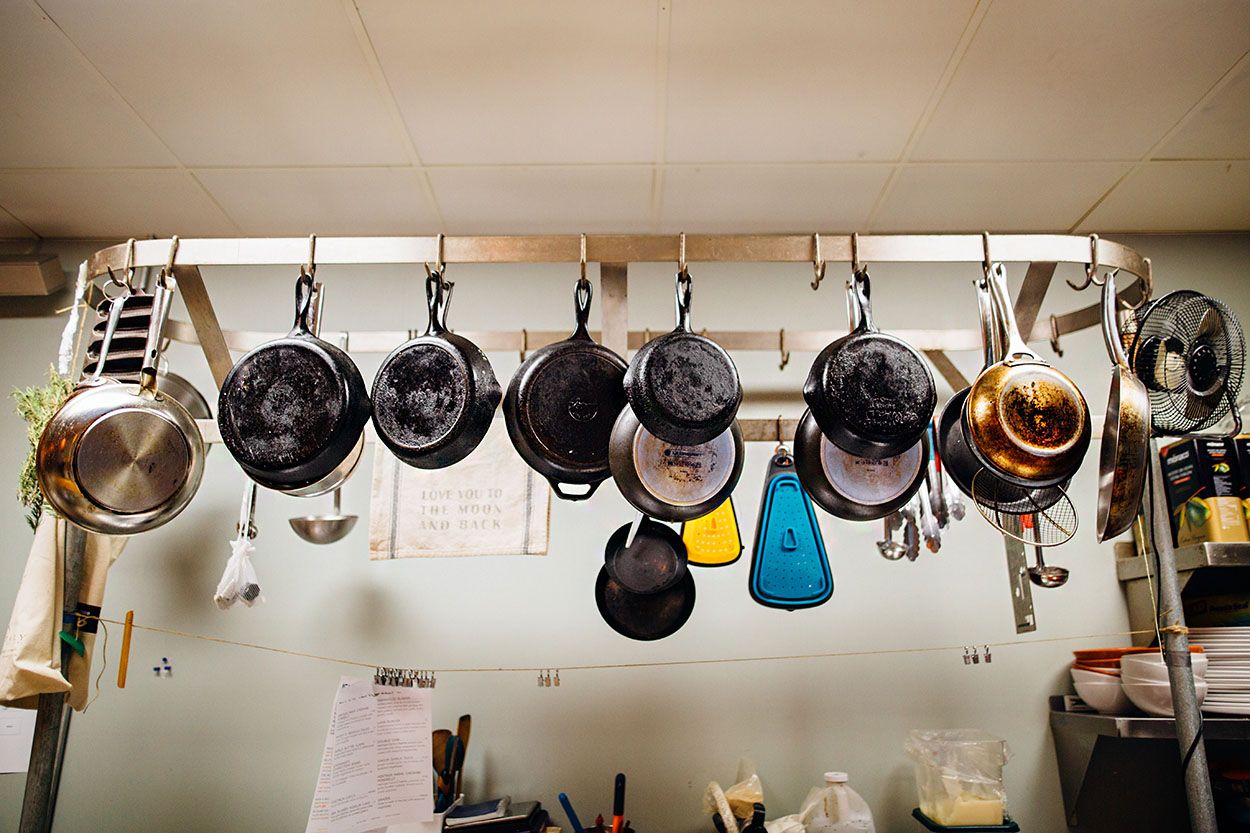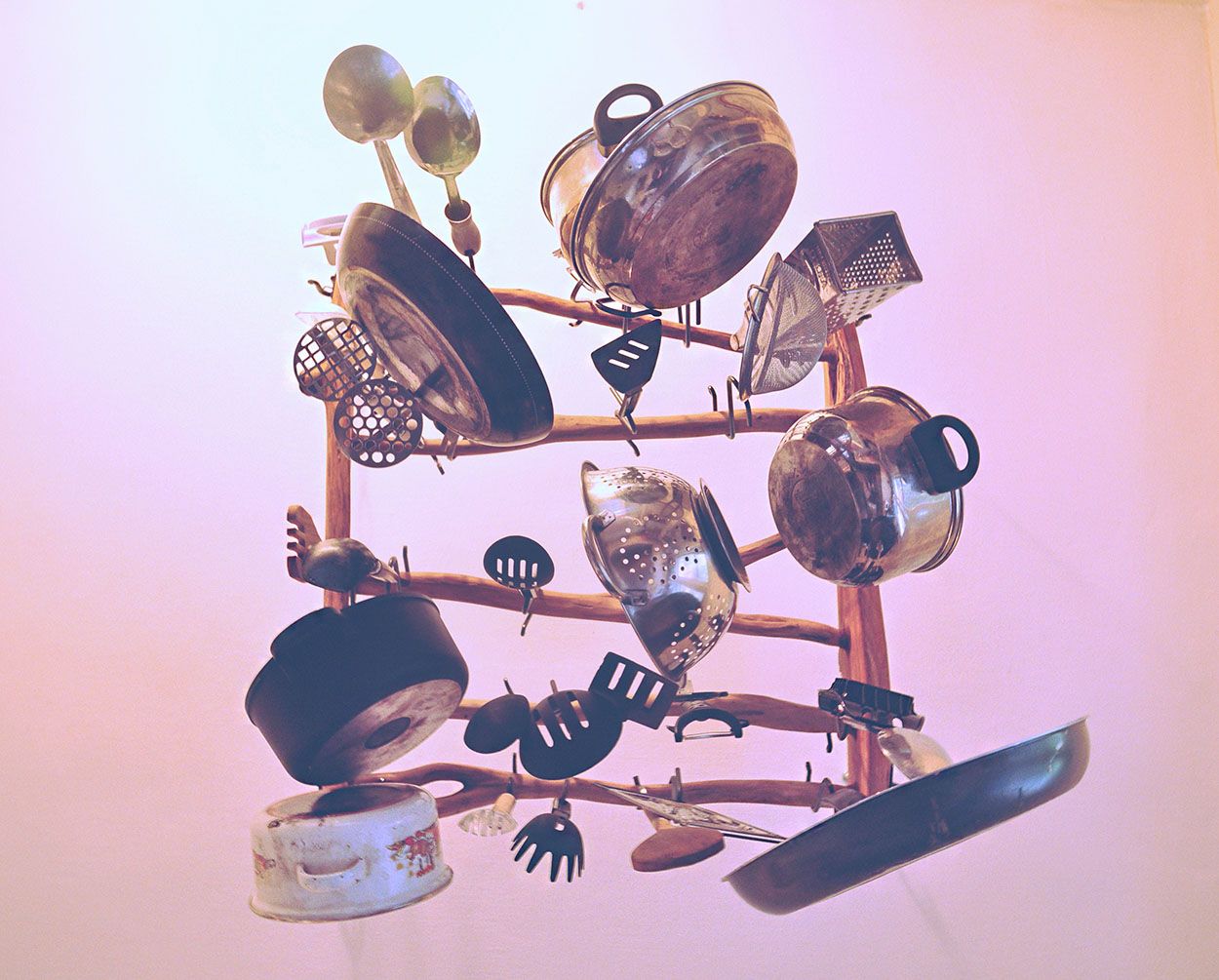What is Cookware?
Cookware is a piece of equipment that is used for cooking and preparing simple or exquisite food for people. There are many kinds of cookware, each of which has specific uses, which we will discuss briefly below! However, the general purpose of cookware is to create a suitable environment to cook meals.
Cookware is very substantial to us because it has lots of functions. Not only is it used for cooking the foodstuffs but also for storing the leftover cooked food and keeping the ingredients of prepared food safe.
There are different types of cookware available in the market, but the most common one is the Stainless Steel Cookware. It is an ideal cookware for people who want to cook different types of dishes at home. There are many reasons why people buy this cookware.

People prefer stainless steel because it is easy to clean and looks good. Stainless steel is also known as a non-reactive material. If you are looking for cookware that is very easy to clean and use, then stainless steel is a perfect option for you!
Stainless steel cookware is also known as professional cookware, and people use it for special occasions like weddings, birthdays, and similar gatherings. People also use it for large assemblages because it is easy to carry. It is also the perfect option for cooking multiple dishes at a time (obviously a must at huge events) and for people who like to eat healthy food. You can cook different kinds of recipes with stainless steel cookware.
If you are a person who is always worried about the health of your child, then stainless steel is the best option for you. If you are a mother, it is the best choice because it is easy to clean.
It is also a perfect choice for people who love to eat and drink in moderation. So, if you are looking for flawless cookware, you can also use stainless steel cookware. At Shenzhen SOVIFOR Science & Technology Development Co., Ltd, the team crafting the coated cooking utensils ensures the certified quality matches the required standards for the international sustainability of these productive units.
The History of Cookware:
There are many types of cookware. Some are made from metals and are more durable than others. There are also glass, ceramics, bamboo, plastic, and wood cookware.
Cookware was invented around 3500 BC and is very similar to utensils used throughout history. However, the modern cookware was first manufactured in 1823 by Thomas Kerr, a British inventor who wanted a more functional cooking device. He made his first wooden pot for boiling tea, and it caught fire.
People used stone cookware thousands of years ago, but it didn't last. Then they switched to metal, which lasted a little longer. But, eventually, they had to switch to iron. This lasted for hundreds of years. It was so convenient to have these tools at hand. They were perfect for cooking.
His design included a lid to keep out the heat and prevent fire. Since then, cookware has advanced in many ways. Various cookware options exist today, ranging from non-stick and cast iron to ceramic. Many of these options are made to withstand high temperatures and heavy use.
The early cooks used different stones, metals, and other natural materials to make the cookware. Now, most cooks use stainless steel cookware because it is the most convenient option for them. It is also used for making baked goods. And it is also the best cookware for keeping leftover food safe.
Cookware has evolved throughout history. Many people think that the earliest cookware was made of copper. But that wasn't true. Copper didn't become popular until the Middle Ages. Before that, cooks used to use iron.
In ancient times, people cooked food using stone plates and cookware. They used wood as fuel to cook food. When the fire burned out, the cookware became useless. So they were very difficult to clean. Then, the invention of aluminum cookware happened. Aluminum cookware became very popular. They were very convenient because they had no breaking or rusting problems. Many people also like aluminum cookware because it is easy to clean. If you have a problem with the cookware, you can take it to the store and ask them about it.
In the Middle Ages, copper cookware was invented. It was easy to clean, but copper also oxidizes easily. Copper has two major disadvantages. One disadvantage is that it gets easily corroded by water. Another disadvantage is that it can leach into food. You can keep leftover food safe in copper cookware for longer. But it can get very rusty and can get damaged easily. Stainless steel is another type of cookware. It does not react with food and water. It is also easy to clean and maintain.
Today, we primarily use stainless steel cookware because it is the best for all kinds of cooking. Most professional-kitchen stainless steel cookware is also made with non-stick materials.
Many people would say that the best kitchen tools are the ones that last. In terms of nonstick cookware, this can be a very true statement. Over the years, nonstick cookware has come a long way in terms of the quality and performance of its finish.
Cookware made of aluminum tends to be the best for durability, and it is not surprising to find a lot of home cooks who prefer to use aluminum pans over stainless steel for cooking. Below we discuss all the materials and types of cookware with their possible benefits for the kitchens!
Features of Ceramic Cookware:
Ceramic pots are a good choice for food preparation. They are easy to wash and clean. They are also a good choice for heating foods. They have high heat tolerance and can also hold a large amount of food. They are very strong, and they can be used for several years.
There are two types of ceramic cookware: 1. aluminum-ceramic cookware and 2. non-metal cookware. The first is a combination of ceramic and aluminum. It's safe to use and has an excellent heat tolerance. It is also a good choice for cooking. On the other hand, non-metal cookware is used for cooking vegetarian meals. It is a combination of ceramic and stainless steel. These pots are designed to be able to withstand high temperatures. It is recommended to use non-metal cookware for cooking in a gas oven.
Ceramic cookware has been around for centuries. The earliest known pots are found in ancient Egypt dating back 5,000 years. At that time, ceramic cooking was considered to be a sacred art with special vessels used only by priests.
In the early 1800s, porcelain became the dominant material used to manufacture pots. As such, most ceramic cookware today is made out of porcelain. (This is not to say other materials are not used in the industry. Many modern pots are made with composite materials.)
As ceramic cookware became more affordable, people started cooking with it. Soon, cooks and home chefs became attracted to its durability and non-stick properties. Ceramic cookware is generally not recommended for baking. As you might expect, baking requires more heat and temperature than other types of cooking. Ceramic cookware does not conduct heat nearly as well as metal or glass. As such, it’s often less forgiving when you are baking something.
Cooks that have moved to ceramics have usually done so for health reasons. Metal and glass cookware conducts heat better than ceramic. More heat can be transferred to foods to get hotter more quickly. More heat also means foods take longer to cool down. If a soup dish warms up too quickly, it’s difficult to serve or consume.
Heat transfer is an important consideration when choosing ceramic coated cookware. More heat means more time in the oven or on the stovetop, which can lead to overcooking, burnt bottoms, and uneven heat distribution.
Ceramic cookware is non-stick. If you use a non-stick skillet regularly, you know the advantages of a non-stick surface. Less oil, grease, or other sticky liquids are needed for easy cleanup.
Features of Nonstick Glass Cooking Utensils:
Glass cookware offers advantages over traditional aluminum or Teflon cookware, making it a safer, easier-to-clean, and more environmentally friendly choice.
The nonstick coating on glass makes cleanup a breeze, and the fact that glass doesn't conduct heat is ideal for searing and browning.
These pots are designed to be able to withstand high temperatures. It is recommended to use non-metal cookware for cooking in a gas oven. Non-metal cookware is easier to clean and safer than metal cookware. You may also want to consider using non-metal cookware for cooking meat. For example, you can put a piece of meat in a non-metal pan and place it on a hot grill.
Features of Aluminum Nonstick Kitchenware:
If you are looking for an alternative to metal pans, you should try aluminum non-stick cookware. Aluminum cookware is very durable and can last a long time. Most aluminum cookware is coated with a special coating. This makes the cookware extremely durable. In addition, aluminum is easy to clean. You can wipe the pan with soap and water. You don't have to worry about your hands getting dirty while cleaning the pan. This is especially important if you are using a stainless steel pan.
You can also choose non-stick Aluminum pans and pots for daily use! These pans don't require any oil to cook with (details in the next para). This can make cooking a lot easier. Some non-stick pans are coated with a special coating to help your food brown. This means you can use your pans for cooking foods quickly and easily.
A non-stick pan is actually a type of cookware that uses very little or no oil to prevent food from sticking. It does so by creating a layer of microscopic pores on its surface. When the pan is heated, these pores get filled with moisture, and then, when the pan is cooled, the moisture is drawn up into the pores creating the non-stick coating.
In other words, a non-stick pan is a pan that has a coating of aluminum oxide on it that doesn't need any cooking oil to keep things from sticking.
The most common aluminum nonstick pans are made from aluminum or coated with Teflon. However, some prefer cast iron pans since they provide better heat retention and transfer.
Features of Cast Iron Enameled Cooking Ware:
Using cast iron cookware is a great way to cook healthy meals. Cast iron cookware is very effective. It is durable as well. Enameled cast iron cookware is known to last and will serve its user well for many years to come. Its sturdiness is due to its ability to withstand high temperatures and chemical attacks without losing its properties. However, it is important to understand that enameled cast iron will lose its durability over time if not used properly.
The beauty of enameled cast iron is that it can withstand even the harshest conditions in the kitchen, and it's been around since the dawn of the steel industry. While the enameling process is arduous and takes hours of meticulous attention to detail, the resulting material is virtually impervious to the elements. Because of that, cast iron is one of the few safe materials to use for direct contact with food.
Cast iron is one of the most cost-effective kitchen investments out there, especially when compared to the price of other similar types of cookware. It's simple to use and easy to care for, so you won’t have to worry about replacing it. Enameled cast iron is one of the safest options for reducing your home's impact on the environment. Because the material doesn’t contain lead or cadmium, you don’t have to worry about toxins that may leech into the environment during manufacturing. And because the enamel is generally made from recycled materials, your purchase is also an act of sustainability.
Features of Clay and Stoneware:
The use of stoneware or earthenware in cooking has been around for a long time. It’s one of the oldest known ceramic materials used for cooking. Stoneware is a type of earthenware made from fired clay, usually glazed, used for cooking, serving, and storage, and as a vessel for decorative objects.
Clay pots can be fired in an oven, baked in a kiln, or fired on a stove, but they are not made from stoneware. Some of the advantages of stoneware include its nonporous nature and its ability to be fired at a lower temperature than ceramics made from clay.
In the ancient Greek city of Corinth, clay vessels were made from clay dug up on the ground. The Greeks would heat the clay pot over a wood fire until the clay became malleable. Then, the pot would be formed, and the clay fired.
This is one of the earliest types of pottery and was called kylix (a Greek word meaning 'cup'). Another ancient type of pottery was called amphora (half-vessel). Amphora was used to carry oil, wine, and other liquids.
Which Cooking Utensil Material is Best for You?
Most people agree that there’s no one best material for cooking utensils. The materials that cookware is made of affect its performance, price, and how it feels to the hand. The best material depends on what kind of cookware you want to use.
Whether you’re a casual foodie who cooks once a week, or a professional chef preparing meals for a family of 10 every single day, there’s a cooking utensil for you. It’s no secret that our food tastes better when cooked at home. When you choose an appropriate utensil, you can help prevent food-borne illnesses, too.
Cookware is often the first kitchen tool that comes to mind when someone thinks of a kitchen, so it’s important to get it right. You need something that fits the size and type of cooking surface you have, has durability, and won’t break or chip if dropped.
Stainless steel is the ideal material for your cookware. It’s durable, easy to clean, and won’t chip, dent or rust. It’s also FDA-approved, so you don’t have to worry about toxic fumes escaping the pan and potentially causing you harm.
Some pans are specifically made for meat or a lot of grain cooking. It is best to err on the side of caution. You’ll want a non-stick pan if you eat a lot of meat. Non-stick pans are made to be safe for use with food, but they’re not great for a delicate, even coating of food. When choosing non-stick, go for the high heat setting, which provides the most even cooking.












